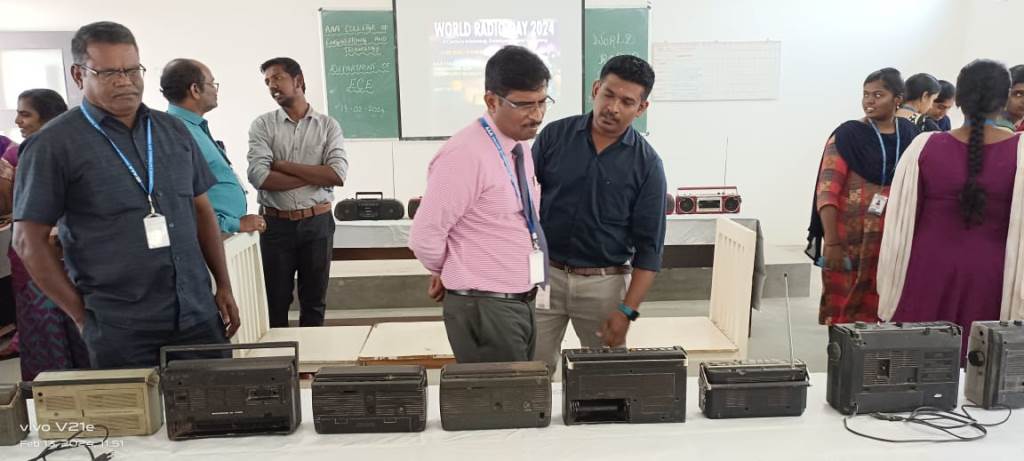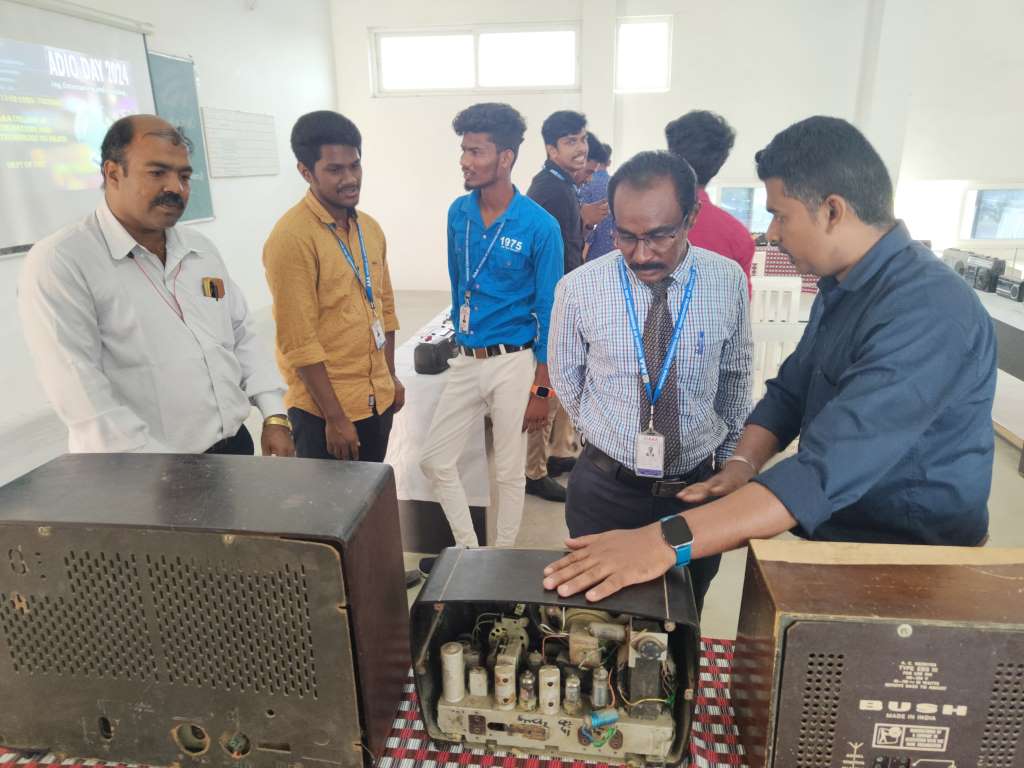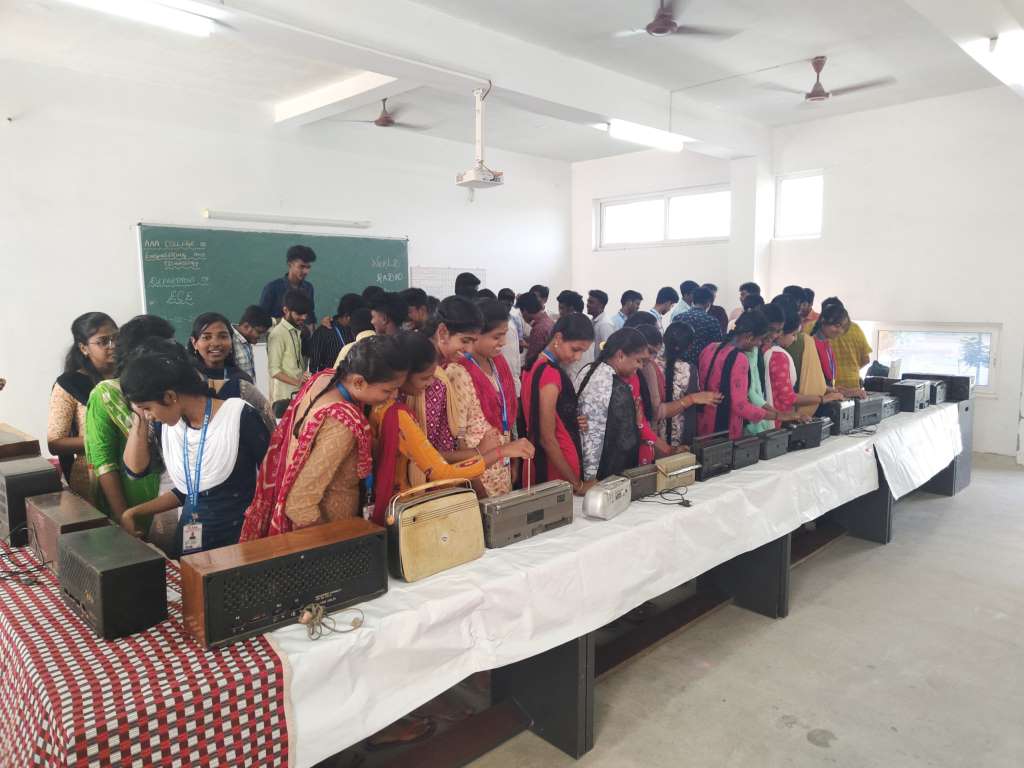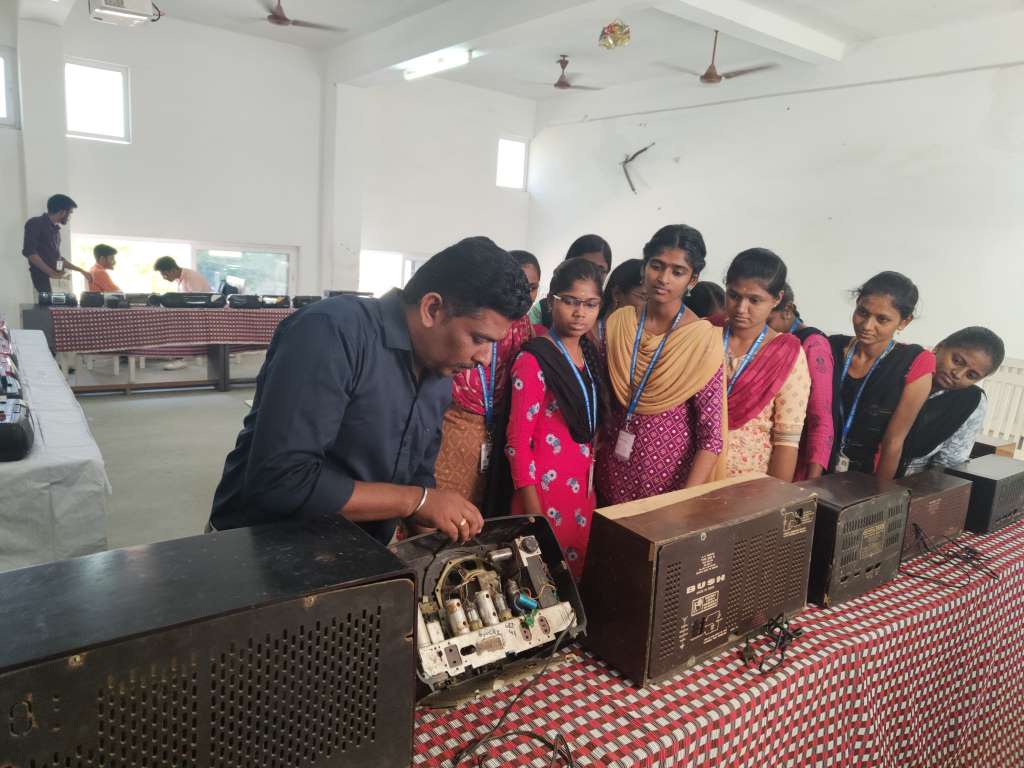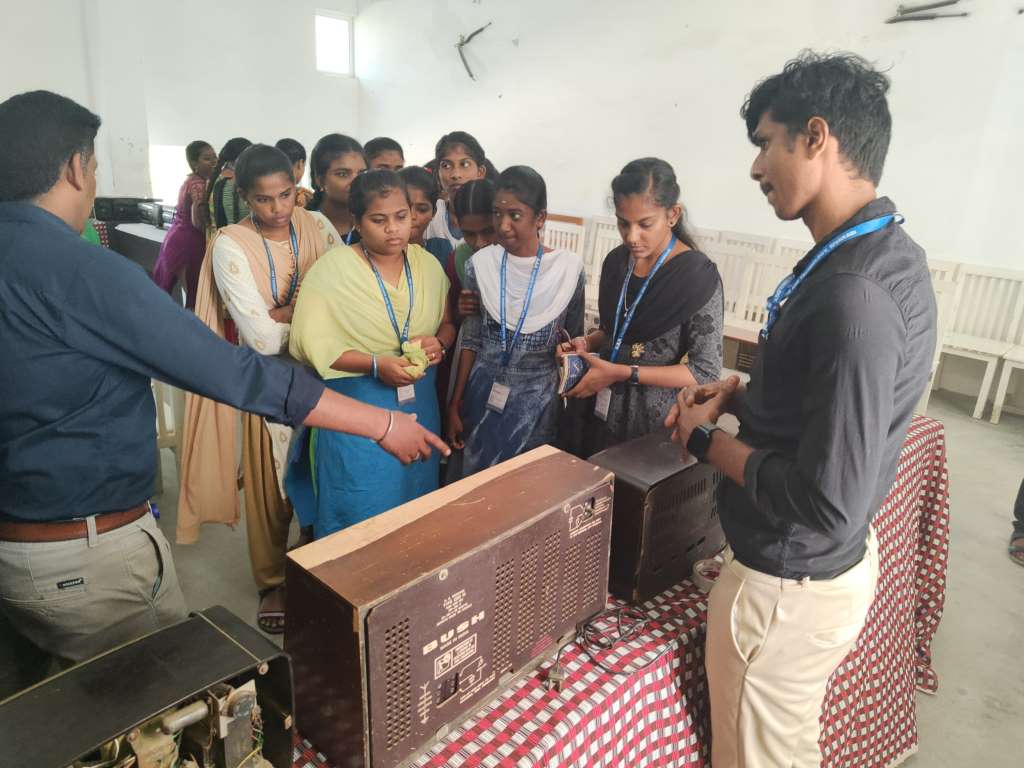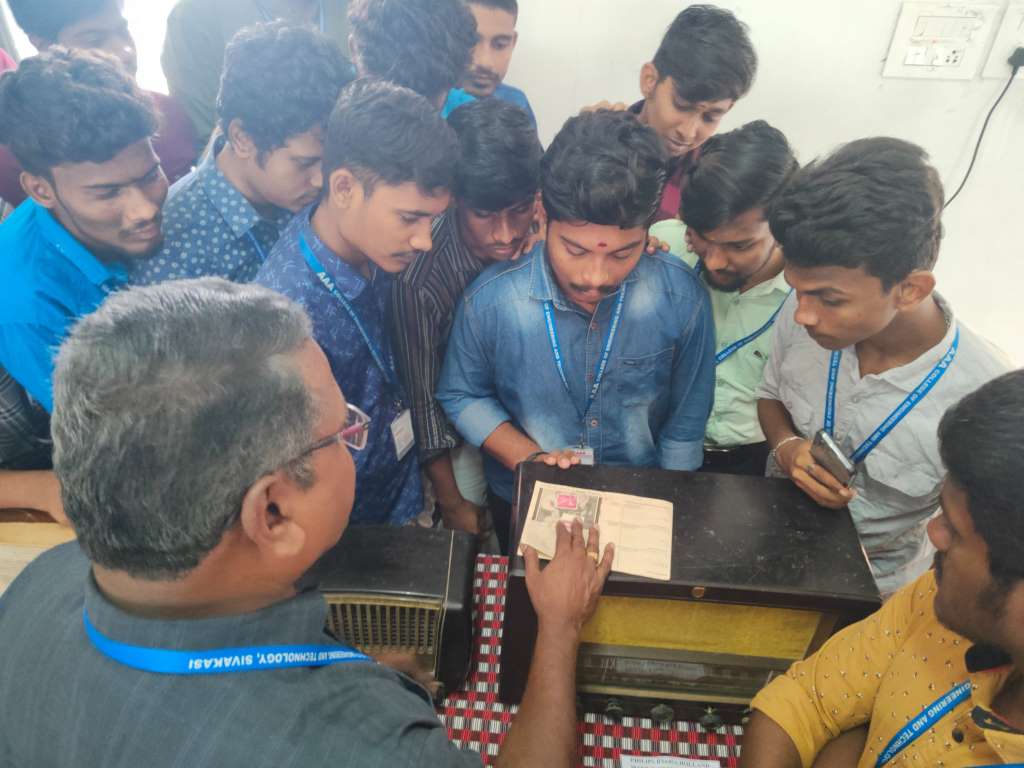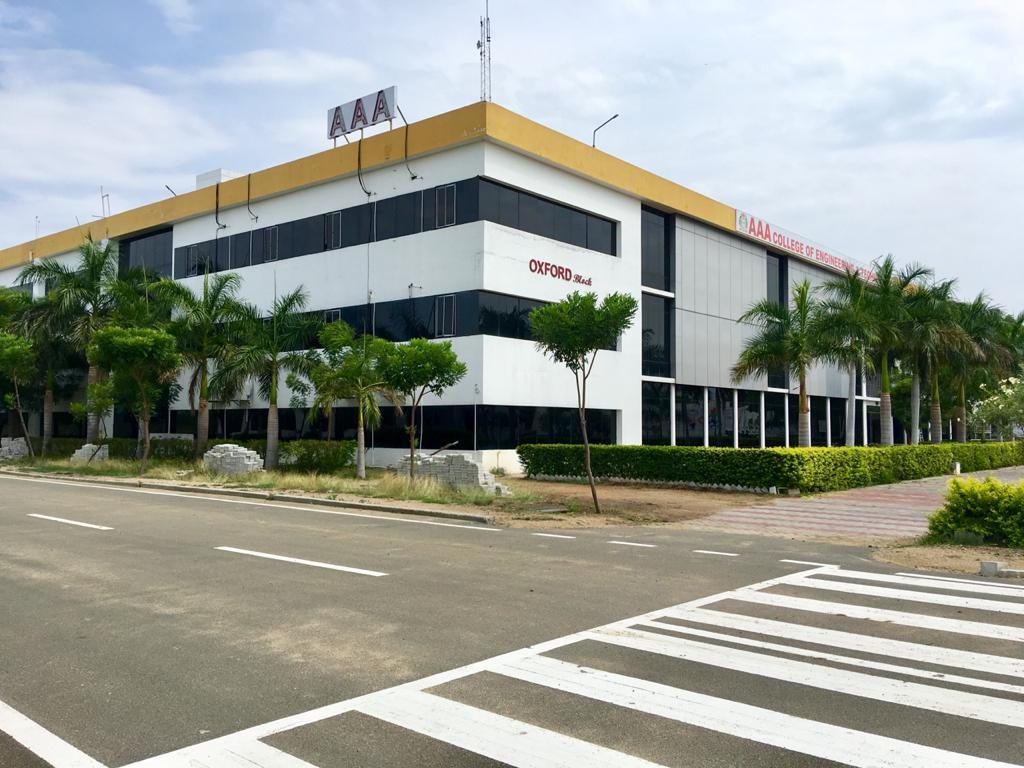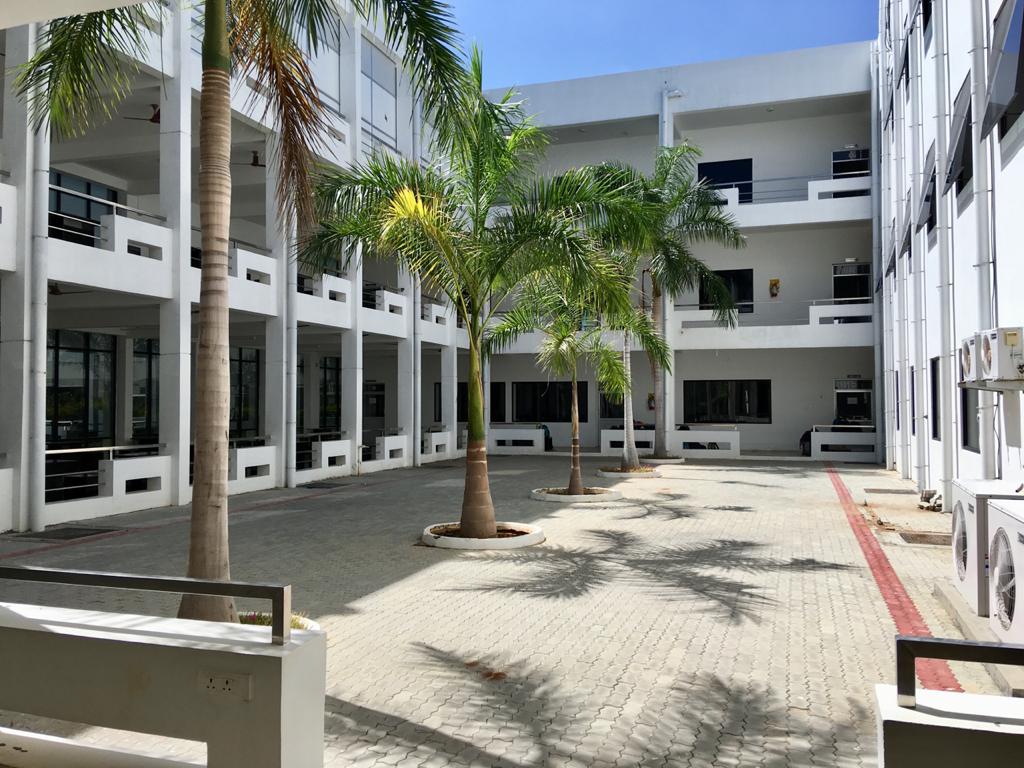The Department of Electronics Communication, AAA College of Engineering and Technology Sivakasi celebrated the World Radio Day on 13-02-2024 Tuesday. The day was proclaimed by the UNESCO in 2011 and observed annually to commemorate the anniversary of the first radio broadcast on February 13, 1922, by the United Nations (UN) Radio. The objective of World Radio Day is to raise greater awareness among the public and media regarding the importance of radio. The theme for the World Radio Day 2024 is “Radio: A century informing, entertaining and educating”. The United Nations states, “The 2024 observance highlights the history of radio and its powerful impact on news, drama, music and sports. As a part of this programme, a exhibition session of the radio receivers for understanding the evolution of radio receivers and guest lecture are arranged by the ECE department.
AAACET Principal Dr.M.Sekar inaugurated the exhibition of Vintage radio receivers arranged in the room no: 2101 ((Cambridge block I floor). In his inaugural speech, he recounted how radio service was a major source of national and international news for the general public before television, computers, internet and mobile phones were introduced. Dr. G. Jayahari Prabhu, AP/ECE, gave a briefing of his 1930s-era radio receiver collection with license note book used in 1970s for keeping the radio receivers. In his collections, greater number of radio receivers’ use valves i.e. vacuum tubes as active devices for detection, amplification, and other functions. Dr. T. Senthil, HOD/ECE, gave a presentation in which he discussed the history of radio receivers, beginning with Guglielmo Marconi, Lee De Forest—dubbed the father of radio—and Armstrong, who made groundbreaking contributions to the realm of wireless networks. The students and faculty members of the various departments of the AAACET participated in the exhibition and interacted with the organizers, regarding the early detectors, TRF and heterodyne receivers.
